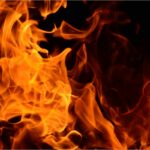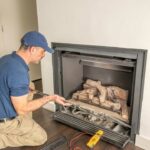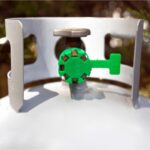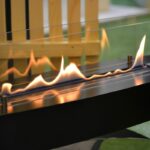Traditional wood-burning fireplaces always require a chimney in order for the fumes to be safely transported out of the area that is being warmed by the fireplace.

However, gas fireplaces don’t work in the same way, therefore, an important question arises. Does your gas fireplace need a chimney? And if so, what kind of chimney does it need?
In this article, we will answer these questions.
Does A Gas Fireplace Need A Chimney?
The short answer to this question is, no. A gas fireplace does not need to have a chimney in order to work safely and efficiently. However, that doesn’t mean that all gas fireplaces are without a chimney.
Although a gas fireplace doesn’t need a traditional chimney in the same way as a wood-burning fireplace does, it does still require some sort of ventilation.
Without sufficient ventilation, the environment in which your fireplace is located will become uncomfortable and unhealthy over time.
Can You Install A Gas Fireplace Without A Chimney?
It is perfectly possible to install a gas fireplace in your home without a chimney. This actually makes it quite a popular and versatile option for many people.
There are two scenarios in which you can install a gas fireplace without a chimney. You do not need to have a chimney if you have a gas fireplace that is ventless.
This means that it has been designed to be used without a chimney or a vent. With this type of fireplace, it is perfectly safe to use the fireplace without any kind of ventilation system.
The other scenario in which you can safely install a gas fireplace without a chimney is if you have a vented fireplace.
This is a gas fireplace that comes with a built-in ventilation system that removes the fumes and toxins from the air and transports them outside of the house without the need for a chimney.
What Kind Of Chimney Does A Gas Fireplace Need?
Although gas fireplaces don’t necessarily need a full chimney to be safely installed into your home, it is possible to install a gas fireplace into a pre-existing chimney.
As long as the chimney that you already have in your home is big enough to handle the size of your new gas fireplace, you should be able to install it with no problem.
All you need to do is run the vent from the fireplace up the chimney to guide the fumes up and out.
If you do not have a pre-existing chimney that is appropriately sized for your gas fireplace, you will need to install a ventilation system that is compatible with your gas fireplace.
To do this, you will need to attach a pipe or hose to your gas fireplace that exits through an external wall in your home. The pipe or hose can be fitted horizontally or vertically as long as it exits outside of your home.
Most gas fireplaces that require ventilation will come with a pipe or a hose that is either already attached, or that is compatible with the fireplace and easy to attach yourself.
If you don’t have a chimney already in your home, and you don’t want to or can’t make physical changes to your home such as cutting a ventilation hole in your wall, there is another option for you.
There are plenty of gas fireplaces available that are ventless.
This is essentially a gas fireplace that doesn’t need a chimney or a vent. It has a system in it that prevents fumes from escaping into your living space when the fireplace is in use.
Do You Need A Chimney Sweep For A Gas Fireplace?
If you have installed a gas fireplace and incorporated the ventilation system into a chimney that was pre-existing in your home, you might have some questions about what type of maintenance the chimney requires.
The role of a chimney sweep with a traditional wood-burning fireplace is to clean away excess soot and debris that can result from the smoke that is generated by that type of fire.
If this soot and debris aren’t cleaned away regularly by a professional chimney sweep, they can quickly become a fire risk which can result in extensive damage to your fireplace, chimney, and the rest of your home.
Thankfully, with a gas-powered fireplace, there is no smoke or soot. This means that there is no need to have the chimney swept regularly as there is no fire risk.
However, with a gas fireplace in a traditional chimney, you are likely to encounter issues with condensation forming inside the chimney.
When condensation forms inside the chimney, the damp patches can remain for an extended period of time. This can cause damage to the walls and ceilings where the water can seep through.
However, this issue can be avoided with regular servicing of your gas fireplace and checks for condensation build-up.
Which Gas Fireplaces Need To Be Vented?
Unless you have specifically bought a gas fireplace that is ventless, you will need to vent your gas fireplace in order to keep your home and family safe.
Before you go out and purchase a ventless gas fireplace because it seems like the easiest option, it is important to note that these fireplaces have been banned in some states.
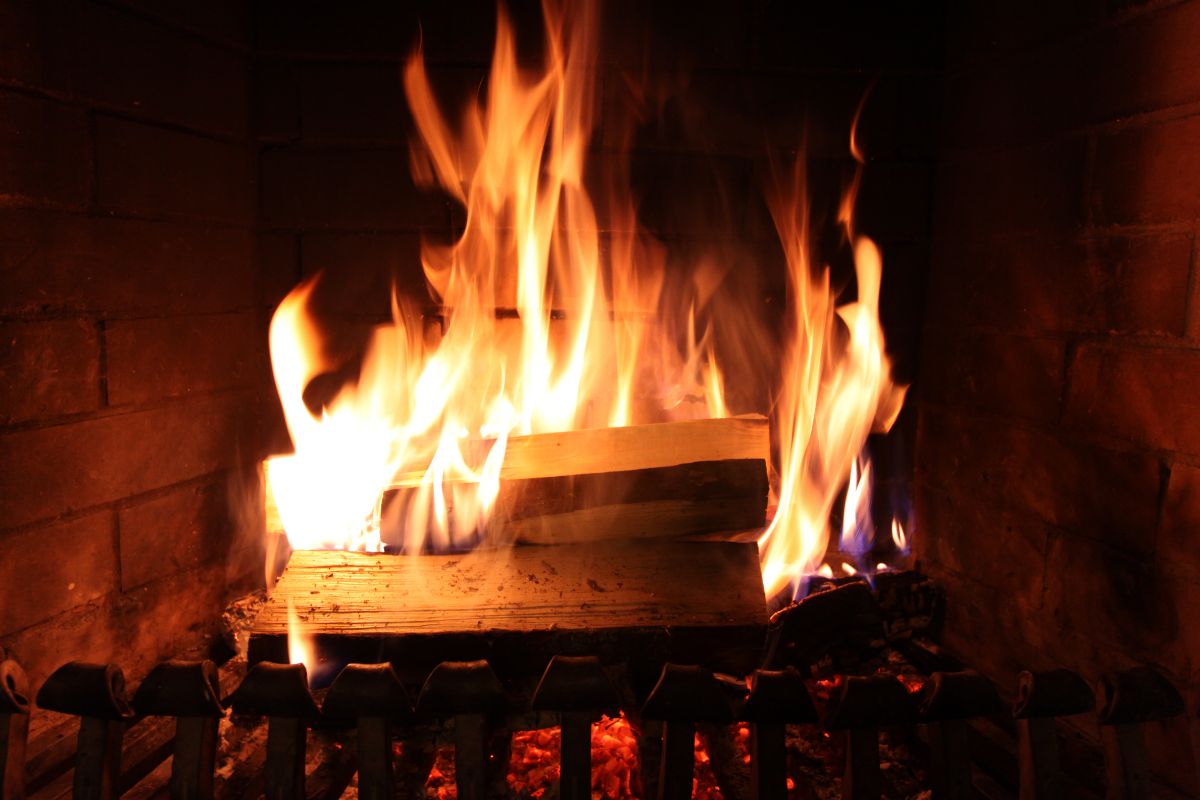
Below are some different types of gas fireplaces and the ventilation systems that they have.
Direct Vent Fireplaces
A direct vent fireplace has been specifically designed to keep the fumes from the fireplace and the air in your living space separate. This is achieved through the use of two separate chambers.
One of the chambers is used to circulate the air around the fireplace. The other chamber is used to expel the fumes outside via a vent.
A direct vent fireplace uses air that has been drawn in from outside instead of from inside the home. This is a great system to keep the fireplace ventilation completely separate from the air inside your home.
It also allows you to use your fireplace without the need for a draft to keep the fire lit.
B-Vent Fireplaces
B-vent fireplaces are also known as natural fireplaces. These are the types of fireplaces that use natural vents such as chimneys or other piping systems that take the fumes up and out of the roof.
Using a piping system is a brilliant way to remove the fumes of the gas fireplace without having to build a brick chimney onto your home.
The downside to natural or b-vent fireplaces is that the majority of the heat from the fireplace is lost through the ventilation system. This is because the heat naturally rises and can make your fireplace significantly less effective.
Ventless Fireplaces
Finally, you can install a ventless fireplace that doesn’t require a chimney or a ventilation system. This allows you to install the fireplace in any part of your home without the need for construction work.
Final Thoughts
Gas fireplaces do not need a chimney in the same way that a traditional wood-burning fireplace needs a chimney.
Instead, you can purchase a ventless fireplace, or install a ventilation system that is less expensive or intrusive than a full-sized chimney.
- Discover the Ease and Elegance of Zero-Clearance Fireplaces - July 24, 2023
- How to Build a Frame for an Electric Fireplace Insert: A Step-by-Step Guide - July 16, 2023
- Bedroom Fireplace Ideas That Will Make You Want to Snuggle Up - July 16, 2023

